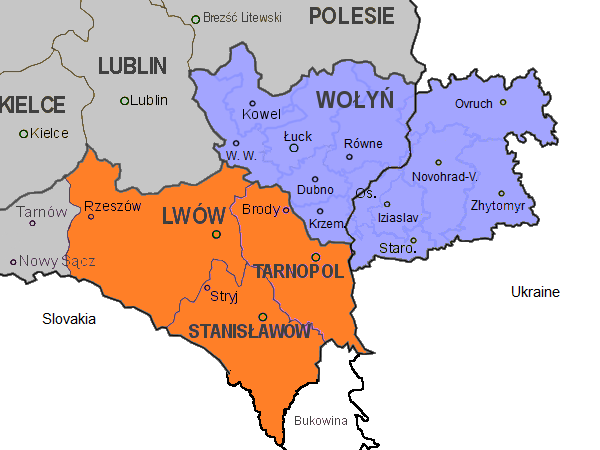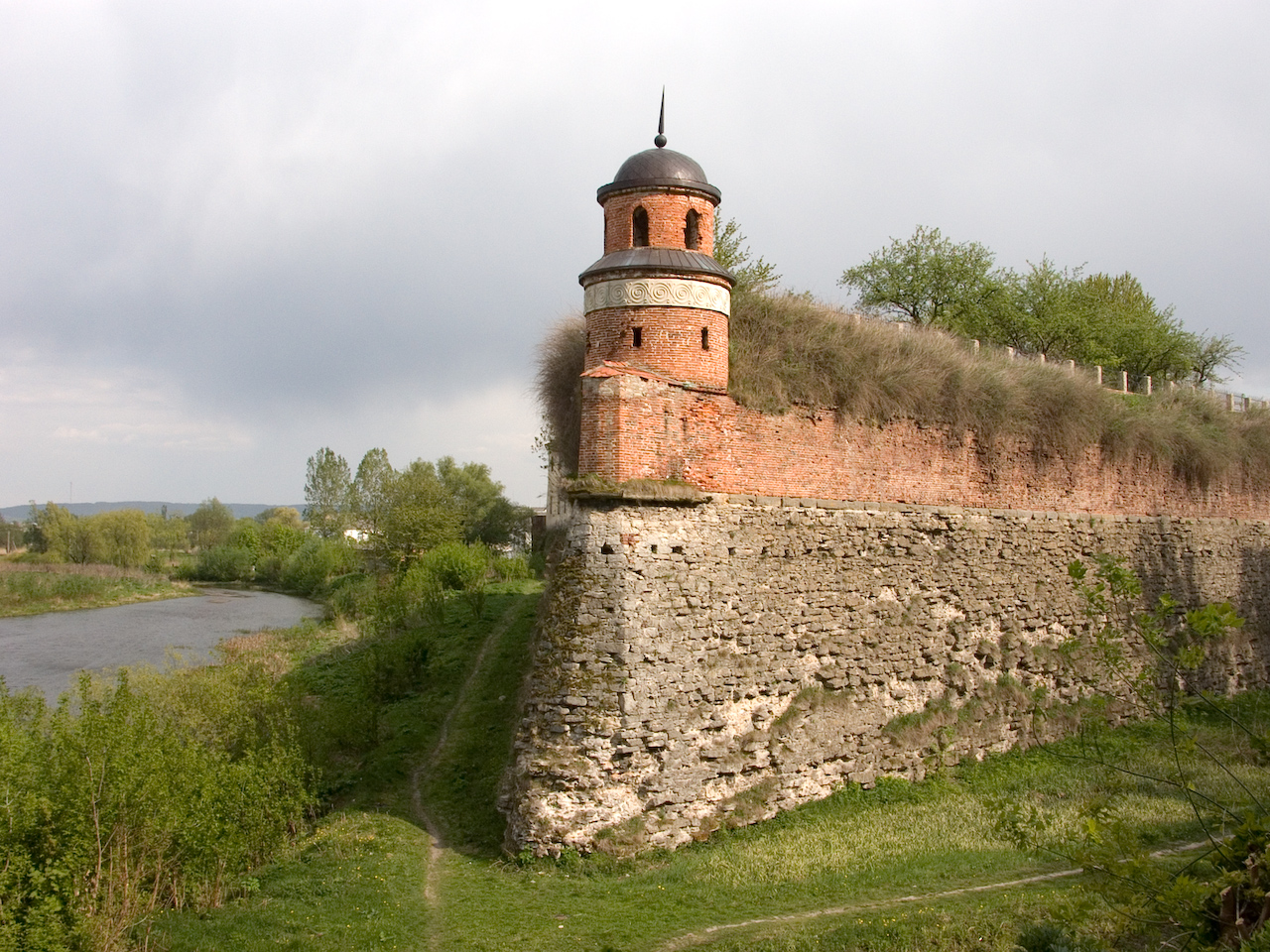|
Krzemieniec Lyceum
Krzemieniec Lyceum (; ; ; sometimes referred to as "the Volhynian Athens" and " Czacki's School") was a renowned Polish secondary school which existed 1805-31 and later, in the Interbellum, in 1922-39 in Krzemieniec (now Kremenets in Ukraine). Founding The school was founded, with help from Hugo Kołłątaj, by Tadeusz Czacki, who in the early 19th century was director of the school districts of three guberniyas of the Russian Empire: Volhynia Guberniya, Podolia Guberniya, and Kiev Guberniya. Czacki was directed to establish the school by the liberal Tsar Alexander I. The Russian ruler announced the school's creation on 18 May 1803. It was organized under the supervision of then-thriving Wilno University. The school was located in buildings of a former Jesuit college and in a palace of the Wiśniowiecki family. The school served as an educational center for the southeastern part of the former Polish–Lithuanian Commonwealth (which had been partitioned out of exist ... [...More Info...] [...Related Items...] OR: [Wikipedia] [Google] [Baidu] |
Volhynia
Volhynia or Volynia ( ; see #Names and etymology, below) is a historic region in Central and Eastern Europe, between southeastern Poland, southwestern Belarus, and northwestern Ukraine. The borders of the region are not clearly defined, but in Ukraine it is roughly equivalent to Volyn Oblast, Volyn and Rivne Oblasts; the territory that still carries the name is Volyn Oblast. Volhynia has changed hands numerous times throughout history and been divided among competing powers. For centuries it was part of the Polish-Lithuanian Commonwealth. After the Russian annexation during the Partitions of Poland, all of Volhynia was made part of the Pale of Settlement on the southwestern border of the Russian Empire. Important cities include Rivne, Lutsk, Zviahel, and Volodymyr (city), Volodymyr. Names and etymology *, ; * ; *, ; * or ; *; * ; *; *; * or (both ); Volhynian German: , , or (all ); *, or . The alternative name for the region is Lodomeria after the city of Volodymyr (city ... [...More Info...] [...Related Items...] OR: [Wikipedia] [Google] [Baidu] |
Jesuit
The Society of Jesus (; abbreviation: S.J. or SJ), also known as the Jesuit Order or the Jesuits ( ; ), is a religious order (Catholic), religious order of clerics regular of pontifical right for men in the Catholic Church headquartered in Rome. It was founded in 1540 by Ignatius of Loyola and six companions, with the approval of Pope Paul III. The Society of Jesus is the largest religious order in the Catholic Church and has played significant role in education, charity, humanitarian acts and global policies. The Society of Jesus is engaged in evangelization and apostolic ministry in 112 countries. Jesuits work in education, research, and cultural pursuits. They also conduct retreats, minister in hospitals and parishes, sponsor direct social and humanitarian works, and promote Ecumenism, ecumenical dialogue. The Society of Jesus is consecrated under the patron saint, patronage of Madonna della Strada, a title of the Blessed Virgin Mary, and it is led by a Superior General of ... [...More Info...] [...Related Items...] OR: [Wikipedia] [Google] [Baidu] |
Lemberg
Lviv ( or ; ; ; see #Names and symbols, below for other names) is the largest city in western Ukraine, as well as the List of cities in Ukraine, fifth-largest city in Ukraine, with a population of It serves as the administrative centre of Lviv Oblast and Lviv Raion, and is one of the main Ukrainian culture, cultural centres of Ukraine. Lviv also hosts the administration of Lviv urban hromada. It was named after Leo I of Galicia, the eldest son of Daniel of Galicia, Daniel, King of Ruthenia. Lviv (then Lwów) emerged as the centre of the historical regions of Red Ruthenia and Galicia (Eastern Europe), Galicia in the 14th century, superseding Halych, Chełm, Belz, and Przemyśl. It was the capital of the Kingdom of Galicia–Volhynia from 1272 to 1349, when it went to King Casimir III the Great of Kingdom of Poland, Poland in a Galicia–Volhynia Wars, war of succession. In 1356, Casimir the Great granted it town rights. From 1434, it was the regional capital of the Ruthenian ... [...More Info...] [...Related Items...] OR: [Wikipedia] [Google] [Baidu] |
Juliusz Słowacki
Juliusz Słowacki (; ; ; 4 September 1809 – 3 April 1849) was a Polish Romantic poet. He is considered one of the " Three Bards" of Polish literature — a major figure in the Polish Romantic period, and the father of modern Polish drama. His works often feature elements of Slavic pagan traditions, Polish history, mysticism and orientalism. His style includes the employment of neologisms and irony. His primary genre was the drama, but he also wrote lyric poetry. His most popular works include the dramas '' Kordian'' and '' Balladyna'' and the poems '' Beniowski'', '' Testament mój'' and '' Anhelli''. Słowacki spent his youth in the " Stolen Lands", in Kremenets (; now in Ukraine) and Vilnius, Lithuania (Polish: Wilno). He briefly worked for the government of the Kingdom of Poland. During the November 1830 Uprising, he was a courier for the Polish revolutionary government. When the uprising ended in defeat, he found himself abroad and thereafter, like many compatriots, ... [...More Info...] [...Related Items...] OR: [Wikipedia] [Google] [Baidu] |
Joachim Lelewel
Joachim Lelewel (22 March 1786 – 29 May 1861) was a Polish historian, geographer, bibliographer, polyglot and politician. Life Born in Warsaw to a Polonized Prussian family, Lelewel was educated at the Imperial University of Vilna, where in 1814 he became a lecturer in history, with a brief sojourn at Warsaw, 1818–1821, where he joined the Warsaw Society of Friends of Learning. His lectures on Polish history created great enthusiasm, as shown in some lines addressed to him by Adam Mickiewicz that led to Lelewel's removal by the Russians in 1824. Five years later, Lelewel returned to Warsaw, where he was elected a deputy to the Sejm of Congress Poland. He joined the November 1830 Uprising with more enthusiasm than energy, though Tsar Nicholas I identified him as one of the most dangerous rebels. He is considered the author of the motto: "For our freedom and yours". On the suppression of the rebellion, Lelewel made his way in disguise to Germany and subsequently reached Pa ... [...More Info...] [...Related Items...] OR: [Wikipedia] [Google] [Baidu] |
Zytomierz
Zhytomyr ( ; see below for other names) is a city in the north of the western half of Ukraine. It is the administrative center of Zhytomyr Oblast (province), as well as the administrative center of the surrounding Zhytomyr urban hromada ( commune) and Zhytomyr Raion (district). Moreover Zhytomyr consists of two urban districts: Bohunskyi District and Koroliovskyi District (named in honour of Sergey Korolyov). Zhytomyr occupies an area of . Its population is Zhytomyr is a major transport hub. The city lies on a historic route linking the city of Kyiv with the west through Brest. Today it links Warsaw with Kyiv, Minsk with Izmail, and several major cities of Ukraine. Zhytomyr was also the location of Ozerne airbase, a key Cold War strategic aircraft base southeast of the city. Important economic activities of Zhytomyr include lumber milling, food processing, granite quarrying, metalworking, and the manufacture of musical instruments. Zhytomyr Oblast is the main center of t ... [...More Info...] [...Related Items...] OR: [Wikipedia] [Google] [Baidu] |
Dubno
Dubno (, ) is a List of cities in Ukraine, city and List of hromadas of Ukraine, municipality located on the Ikva River in Rivne Oblast (oblast, province) of western Ukraine. It serves as the capital city, administrative center of Dubno Raion (raion, district). The city is located on intersection of two major European routes, E40 and E85. The city is estimated to have a population of . It is located within the historic region of Volhynia. In Soviet times it was home to the Cold War facility Dubno (air base), Dubno air base. The city is also famous for its Dubno Castle, castle. History Middle Ages First mentioned in a chronicle of 1100, when it was in possession of Yaroslav the Wise's grandson David of Brest , Dubno was even a seat of local princes for a short period of time. In 1240 the town was raided by the Mongol Empire, Mongols. In the early 14th century the region was the subject of Kingdom of Poland (1025-1385), Polish-Grand Duchy of Lithuania, Lithuanian rivalry, as ... [...More Info...] [...Related Items...] OR: [Wikipedia] [Google] [Baidu] |
Lutsk
Lutsk (, ; see #Names and etymology, below for other names) is a city on the Styr River in northwestern Ukraine. It is the administrative center of Volyn Oblast and the administrative center of Lutsk Raion within the oblast. Lutsk has a population of A city with almost a thousand years of history, recorded in 1085, Lutsk historically served as an administrative, cultural and religious center in Volhynia. The city contains several landmarks in various styles, including Renaissance architecture, Renaissance, Baroque architecture, Baroque and Neoclassical architecture, Neoclassical, the most known being the medieval Lubart's Castle. Names and etymology Lutsk is an ancient Slavic peoples, Slavic town, mentioned in the Hypatian Chronicle as Luchesk in the records of 1085. The etymology of the name is unclear. There are three hypotheses: the name may have been derived from the Old Slavic word ''luka'' (an arc or bend in a river), or the name may have originated from ''Luka'' (the chi ... [...More Info...] [...Related Items...] OR: [Wikipedia] [Google] [Baidu] |
Galicia (Eastern Europe)
Galicia ( ;"Galicia" ''Collins English Dictionary'' also known by the Variant name (geography), variant name Galizia; , ; , ; ; see #Origins and variations of the name, below) is a historical and geographic region spanning what is now southeastern Poland and western Ukraine, long part of the Polish–Lithuanian Commonwealth.See also: It covers much of the other historic regions of Red Ruthenia (centered on Lviv) and Lesser Poland (centered on Kraków). The name of the region derives from the medieval city of Halych, and was first mentioned in Hungarian historical chronicles in the year 1206 as ''Galiciæ''. The eastern part of the region was c ... [...More Info...] [...Related Items...] OR: [Wikipedia] [Google] [Baidu] |
Austrian Empire
The Austrian Empire, officially known as the Empire of Austria, was a Multinational state, multinational European Great Powers, great power from 1804 to 1867, created by proclamation out of the Habsburg monarchy, realms of the Habsburgs. During its existence, it was the third most populous monarchy in Europe after the Russian Empire and the United Kingdom of Great Britain and Ireland, United Kingdom, while geographically, it was the third-largest empire in Europe after the Russian Empire and the First French Empire. The empire was proclaimed by Francis II, Holy Roman Emperor, Francis II in 1804 in response to Napoleon's declaration of the First French Empire, unifying all Habsburg monarchy, Habsburg possessions under one central government. It remained part of the Holy Roman Empire until the latter's dissolution in 1806. It continued fighting against Napoleon throughout the Napoleonic Wars, except for a period between 1809 and 1813, when Austria was first allied with Napoleon ... [...More Info...] [...Related Items...] OR: [Wikipedia] [Google] [Baidu] |







